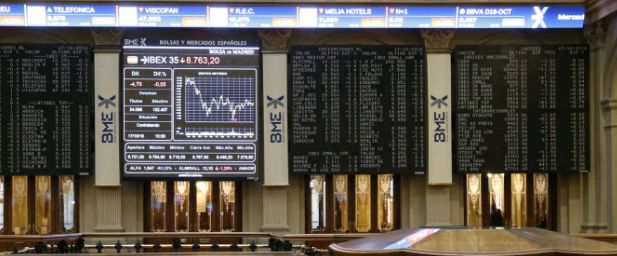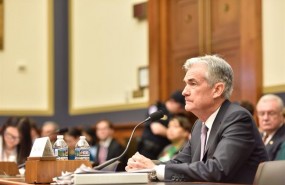
The Ibex 35 has fallen 1.97% to 8,596.50 points, after marking a new intraday annual minimum at 8,567 integers. The projections for rate hikes by the US Federal Reserve (Fed) for 2019 have been more aggressive than expected by the market and the world indexes have strongly accused it (Wall Street is also at annual lows).
- 11.435,700
- -0,28%
One of the values that has particularly weighed the Ibex has been Inditex (-4.8%) after a reduction in the target price of Credit Suisse, which rates the firm 12% below its current price. The parent company of Zara has lost favor with the market and has set new annual minimums.
In addition, DIA (-9.90%) has plummeted again because the market discovers that the supermarket chain is headed for a capital increase that is not supported by its majority shareholder, the Russian investor Mikhail Fridman.
Another value that has registered strong falls has been Gamesa (-6.63%), although sales have been generalized in all values. Santander (-1.5%), BBVA (-1.4%), Repsol (-1.4%) and Telefónica (-1.3%) have also contributed to the Ibex's declines.
In the rest of the global stock exchanges, Europe was allowed to carry on Wednesday for the good news that came from the Italian Budget and the agreement of the government of the transalpine country with Brussels, but the mood soured after the decision of interest rates of the Reserve Federal of the USA. Sales have been widespread in all the major indices of the Old Continent.
In the US, Wall Street set new annual lows when investors decided to sell aggressively after learning of the Fed's decision to raise interest rates again. The monetary policy statement issued by the central bank and the press conference of its president, Jerome Powell, did not convince the market either.
"How could such an accommodative rise be interpreted as so aggressive?" BNY Mellon experts ask. The Fed decided to move forward with the fourth interest rate hike of 2018 (the ninth since the rise cycle began in 2015), which has raised interest rates to 2.25% -2.50%, just the lower part of the fork from 2.5% to 3.5% and that the central bank considers neutral for the types.
But the focus of the matter lies, for the experts at Danske Bank, in that the market expected, at most, to reduce their plans for increases to one more in 2019. Instead, the bags should accommodate two face-ups next year.
In addition, Powell said that the reduction of the balance sheet, which will lose 600,000 million dollars in 2019, will go ahead in "automatic mode" during the next year, which did not please the market. This withdrawal of liquidity, never before made in history, is equivalent to three additional increases in rates, which displeases investors.
The repercussions were also noticed in the Asian stock markets, which have been dyed red with a 3% drop in the Japanese Nikkei.
In the currency market, the euro rises in value 0.32% against the dollar, up to $ 1.1417, while analysts at Danske Bank indicate that the Fed decision encourages further increases in the 'greenback' in the short term. However, these analysts believe that the euro / dollar will remain in range around $ 1.13 in the short term.
THE BANK OF ENGLAND MAINTAINS RATES
In the United Kingdom, the Bank of England (BOE) has maintained stable interest rates at its last meeting of the year, while the UK's economic prospects are highly uncertain less than 100 days before the country leave the European Union (EU).
As expected, the nine members of the Monetary Policy Committee of the BOE, led by Mark Carney, voted unanimously to keep interest rates at 0.75%.
And in the commodities market, the price of Brent oil fell 2.5% to $ 55.82, after having set a new annual minimum during the day at $ 54.64.
TECHNICAL ANALYSIS OF THE IBEX 35
"We have set a new decreasing minimum at 8,567 points, we have a new decreasing minimum that serves to give continuity to the impeccable succession of decreasing highs and lows in recent months, and as you know, this is not the case, the rest of the European indices have also set new decreasing minimums, that is, the corrective phase is continuing, "explains José María Rodríguez, analyst at Bolsamanía .
"But this does not mean that we can not bounce back strongly in the coming days, in fact, nothing falls without its corresponding rebound, even if it continues to fall, in line with the chart of the world's leading index, the S & P 500, what we have is a broad formation of bearish implications in 'head and shoulders' aiming to fall towards the area of 2,300 points, "adds this expert.
"But we do not rule out," Rodríguez concludes, "that before we witnessed a rebound in the form of a 'pull back' to the clavicular line of the formation, now in the vicinity of 2,615 points." In summary, we can not rule out that at any time produce violent rebounds, but these will be as a result of the extreme sales and fear that we have in the market, but not as a change of trend. "




